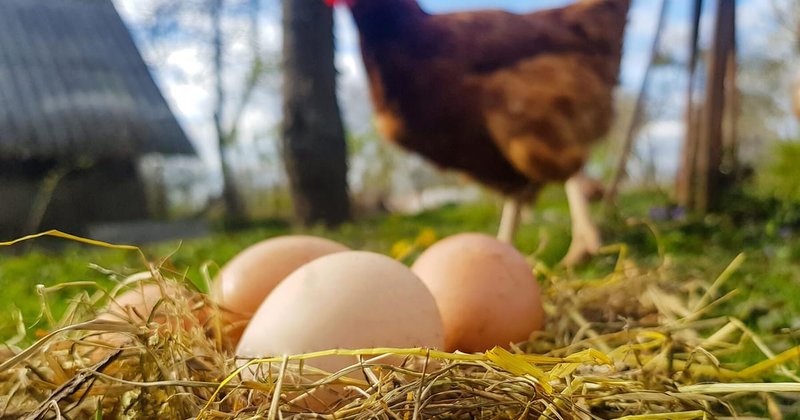
So, how often do chickens lay eggs? Generally, a healthy hen can lay about five to six eggs a week. However, this isn’t a strict rule. Just like some folks are early risers and others prefer to hit the snooze button, chickens have their own rhythms and factors that affect their production. Let’s dig deeper into what influences a hen’s egg-laying schedule and what you can do to ensure your chickens are happy and productive.
The Basics of Chicken Egg Production
To kick things off, it’s essential to understand the egg production cycle. Chickens typically start laying eggs at around 5 to 6 months of age, depending on the breed. Once they hit this milestone, they can lay eggs for several years, often peaking in production during the first and second years.
Hens have a unique reproductive system that includes an ovary and an oviduct. The ovary releases an egg yolk, which then travels through the oviduct, where it receives various layers like the egg white and shell. This process takes about 24 to 26 hours for a single egg, so even in peak production, a hen won’t lay an egg every single day. Think of it like clockwork—each part has its job, and it takes time to get everything just right.
What’s fascinating is that hens can actually control when they lay eggs. They may skip a day or two here and there, especially if something unusual happens—like a change in their environment or health.
Factors Affecting Egg Production
Now, let’s talk about what affects this egg production cycle. There are several key factors that can lead to variations in how often your chickens lay eggs.
1. Age: As mentioned earlier, age plays a significant role. Young hens are more prolific layers, while their production tends to decline as they get older. By around 3 years old, many hens will start laying fewer eggs.
2. Breed: Different breeds will have different laying patterns. For example, Leghorns are known for their high production rate, laying around 300 eggs a year, while others like Silkies might only lay about 100. If you’re aiming for a steady supply of eggs, choosing the right breed is crucial.
3. Light Exposure: Chickens are sensitive to light. They typically need 14-16 hours of light a day to lay eggs regularly. During the shorter winter days, you might notice a drop in egg production. Some owners use artificial lighting to extend daylight hours and encourage laying.
Environment and Housing Conditions
Next, let’s discuss how the environment impacts egg-laying. Imagine if you had to live in a cramped, dark space with little ventilation—wouldn’t be very conducive to productivity, right? Chickens are no different!
1. Space: Hens need enough room to roam, scratch, and explore. If your coop is overcrowded, it can lead to stress, which can negatively affect egg production. Aim for at least 4 square feet per hen in the coop and 10 square feet in an outdoor run.
2. Cleanliness: Keeping the coop clean is vital for healthy chickens and, by extension, good egg production. A dirty environment can lead to diseases, which can stifle a hen’s ability to lay eggs. Regularly clean out nesting boxes and change bedding to maintain a healthy space.
3. Comfort: Chickens enjoy a cozy environment. Ensure they have adequate bedding and protection from harsh weather. Sudden weather changes can disrupt their laying cycle. Just like us, they lay better when they’re comfortable!
Nutrition’s Role in Egg Production
What your chickens eat significantly affects their egg-laying capabilities.
1. Balanced Diet: Chickens require a balanced diet that includes grains, protein, vitamins, and minerals. A commercial layer feed is typically formulated to meet their nutritional needs. Fortified feeds provide the necessary calcium for strong eggshells, which is crucial for production.
2. Fresh Water: Just like us, chickens need plenty of fresh water daily. Dehydration can slow down their metabolism and reduce egg yield. Ensure their drinking water is clean and accessible at all times.
3. Treats and Snacks: While layer feed is important, giving your hens occasional treats can enhance their overall well-being. Fruits, vegetables, and even kitchen scraps can provide additional nutrients, but be sure to keep treats to about 10% of their diet.
Health and Stress Factors
Understanding how health impacts egg production is essential. Chickens can be surprisingly sensitive to stress, and this can lead to production decreases.
1. Illness: Like any living creature, sick chickens won’t lay eggs effectively. Keeping an eye out for signs of illness—such as lethargy, changes in eating habits, or unusual droppings—is crucial for maintaining egg production.
2. Pecking Order: Chickens have their own social structure, known as the pecking order. If there’s fighting or bullying among hens, stress levels can increase, leading to a drop in egg laying. Provide ample space and hiding spots to help maintain harmony.
3. Environmental Stressors: Changes in their environment, such as a new coop or different flock members, can create stress. Keep transitions smooth and gradual to help minimize disruptions.
Seasonal Changes and Their Impact
The seasons affect chickens, and their egg-laying patterns can shift dramatically throughout the year.
1. Summer vs. Winter: In summer, longer days encourage hens to lay more frequently. However, extremely high temperatures can lead to stress, potentially affecting production. On the flip side, winter brings shorter days and can often slow down laying unless supplemental lighting is used.
2. Seasonal Molting: Chickens go through a natural process called molting, where they lose and regrow feathers. This typically occurs in late summer or fall and can last several weeks. During this time, hens may stop laying eggs altogether.
3. Breeding Seasons: For those interested in raising chicks, consider the breeding seasons. Hens often become more inclined to lay during spring when the days lengthen and the weather warms up.
Encouraging Consistent Egg Production
So, how can you promote consistent egg production in your flock? It’s all about creating a supportive and nurturing environment.
1. Monitor Health Regularly: Regular health checks can catch health issues early on. Look for any signs of illness, changes in behavior, or decreased activity levels. A healthy flock is a productive flock!
2. Maintain Clean and Comfortable Housing: Keep your coop clean and ensure there’s enough space for each chicken. A well-kept environment leads to happier, stress-free hens.
3. Balanced Diet and Hydration: Provide a balanced diet, and make sure they always have access to fresh water. If your hens are well-fed and hydrated, they’re more likely to lay eggs consistently.
In conclusion, understanding how often chickens lay eggs and what affects their production can help you care for your flock better. Every chicken is unique, and their laying habits can be influenced by a variety of factors. By creating a suitable environment, providing proper nutrition, and ensuring good health, you can optimize egg production. Happy chicken-keeping!

